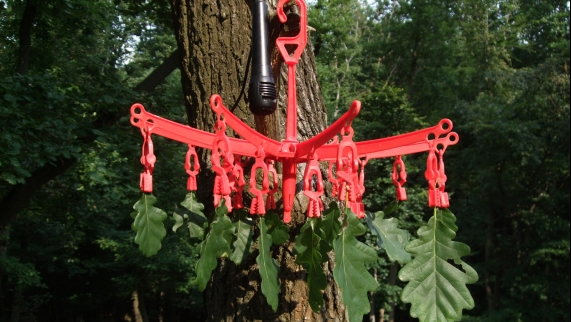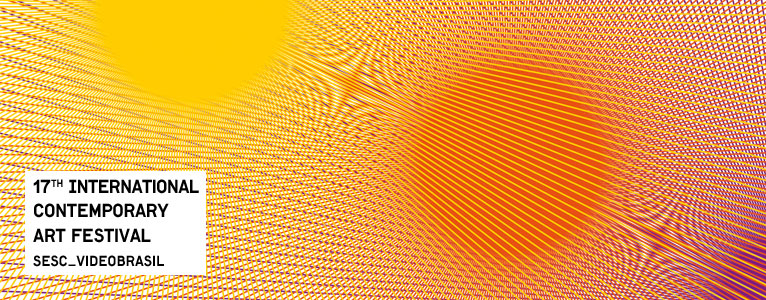17th International Contemporary Art Festival SESC_Videobrasil
30.09,2011 – 11.12.2011
The 17th International Contemporary Art Festival SESC_Videobrasil confirms an orientation that first began to form a decade ago. The Festival’s opening up to all forms of artistic expression brings to fruition a gradual approximation with the visual arts prefigured over the course of four editions devoted to such languages as performance and cinema, and placing increasing importance on exhibition segments beyond their original remit. The intensification of this dialogue was in synch with the growing space allotted to video and the moving image on the contemporary art scene, in their capacity as the preferred mediums for artistic experimentation.
The Southern Panoramas exhibition was created out of a surprising body of submitted work, of which over a third was produced in languages not normally within the Festival’s remit. Coming from all regions covered by the exhibition—Latin America, Africa, Eastern Europe, the Middle East, Asia, and Oceania—, they comprise four sections that informed the curatorial project and materialized as exhibition chapters.
Selection board |
17th International Contemporary Art Festival SESC_Videobrasil
São Paulo, state of São Paulo, Brazil
Selected artists
- Adriano Costa
- Akram Zaatari
- Alexandre Brandão
- Ali Cherri
- Alonso Pafyeze
- Ana Prata
- André Favilla
- Andrei Thomaz
- Angelica Mesiti
- Anna Baumgart
- Aya Eliav
- Ayrson Heráclito
- Bakary Diallo
- Basma Alsharif
- Bogdan Perzynski
- Bouchra Khalili
- Cacá Vicalvi
- Carla Zaccagnini
- Carlos Adriano
- Carlosmagno Rodrigues
- Carolina Caliento
- Chico Dantas
- Christian Delgado
- Cinthia Marcelle
- Claudia Joskowicz
- Cristiano Lenhardt
- Damir Ocko
- Dan Boord
- Dan Halter
- Daniel Salamanca
- Danillo Barata
- Deyson Gilbert
- Dirceu Maués
- Dor Guez
- E. S. Mayorga
- Eder Santos
- Edwin Sanchez
- Fabiano Gonper
- Federico Lamas
- Felipe Barros
- Gabriel Mascaro
- Galina Myznikova
- Gianfranco Foschino
- Gisela Motta e Leandro Lima
- Gregg Smith
- Guilherme Peters
- HeeWon Lee
- Ian Haig
- Ilan Waisberg
- Iván Marino
- Jonathan Case
- Jonathas de Andrade
- José Villalobos Romero
- Laerte Ramos
- Lara Arellano
- Leandro Cardoso
- Liu Wei
- Lixin Bao
- Lucia Mindlin Loeb
- Luciana Ohira
- Luis F. Ramírez Celis
- Luis Valdovino
- Luiz Roque
- Marcello Mercado
- Marcellvs L.
- Marcia Vaitsman
- Marek Ranis
- Maya Watanabe
- Merilyn Fairskye
- Mihai Grecu
- Milton Machado
- Moran Shavit
- Natasha Mendonca
- Nazareno
- Nicola Morton
- Nicolás Testoni
- Nurit Sharett
- Ofir Feldman
- Orit Ben-Shitrit
- Pablo Lobato
- Paula Garcia
- Paulo Nimer Pjota
- Petrina Hicks
- Rafael Urban
- Regina Parra
- Ricardo Carioba
- Roberto Winter
- Roderick Steel
- Rodrigo Bivar
- Rolando Vargas
- Ronaldo Miranda
- Sebastián Díaz Morales
- Sergey Provorov
- Sergio Bonilha
- Shaun Gladwell
- Sherman Ong
- Shima
- Taryn Takahashi
- Tatiana Blass
- Tenzin Phuntsog
- Theo Craveiro
- Tiago Romagnani Silveira
- Vinicius Duarte
- Wagner Morales
- Wagner Malta Tavares
- Ximena Velásquez Sánchez
- Zafer Topaloglu





